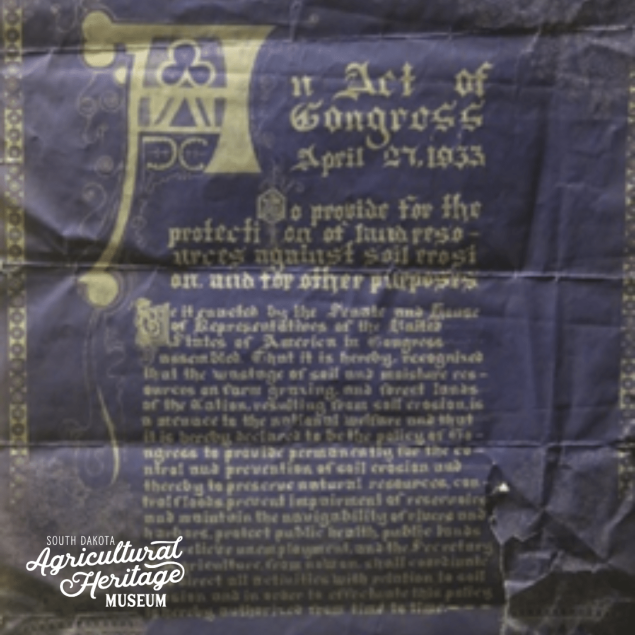
Drought has plagued the Great Plains for centuries. The 1930s was the driest in recorded history. Plowed prairie dried up and blew into strong dust storms giving the term the 'dirty thirties'.
Drought began in South Dakota in the 1920s and continued until 1941. Annual rainfall declined by 75%. It affected the Great Plains from Canada to Mexico. The Upper Great Plains had the worst drought conditions compared to the South. However, Texas, Oklahoma and Kansas received more national attention.
In an effort to combat the soil erosion caused by the drought, wind and obsolete farming practices, President Franklin D. Roosevelt, on April 27, 1935, signed the Soil Conservation Act. This bill established the Soil Conservation Service and provided the funds and expertise to begin restoring the land.
This diazo copy of the bill has the U.S. Department of Agriculture Logo at the center bottom and the text is in Old German typeface. It reads:
"An Act of Congress, April 27, 1935. To provide for the protection of land erosion and for other purposes. Be it enacted by the Senate and the House of Representatives of the United States of America in Congress Assembled that it is hereby recognized that the wastage of soil and moisture resources of farm grazing and forest lands of the Nation resulting from soil erosion a menace to the national welfare and that it is hereby declared to be the policy of Congress to provide permanently for the control and prevention of soil erosion and thereby to preserve natural resources, control floods, prevent impairment of reservoirs and maintain the navigability of rivers and harbors, protect public health, public land and relieve unemployment, and the Secretary of Agriculture, from now on, shall coordinate and direct all activities with relation to soil erosion and in order to effectuate this policy is hereby authorized from time to time..."
The exhibit Drowning in Dirt: Joseph Hutton and the Dust Bowl is opening at the South Dakota Agricultural Heritage Museum on Feb. 27, 2023. Come visit the Museum and learn more about Professor Hutton’s work, the 1930s Dust Bowl and its effects on South Dakota.
2016:023:018

